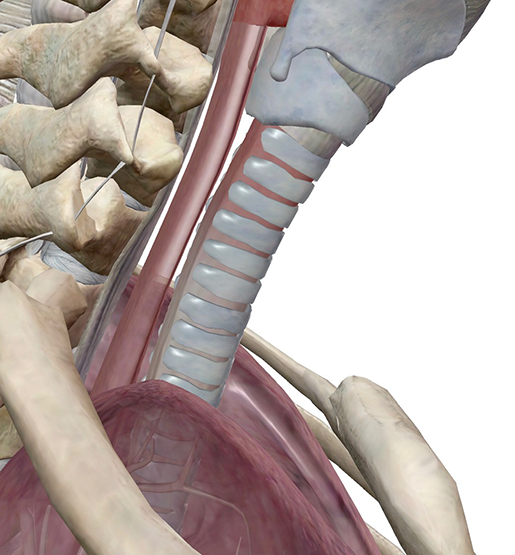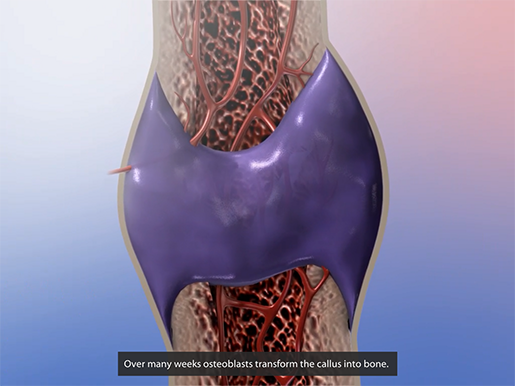VB News Desk: 4 Awesome Biomaterial Innovations
Posted on 1/14/20 by Laura Snider
The material a medical device is made out of is central to its function. Some devices need to deliver drugs and then dissolve. Others need to be able to chemically interact with the body in a particular way. Sometimes a device needs to be able to remain inside the body without causing problems such as inflammation.
There’s a special name for materials that are used to create these devices—biomaterials—and that’s what we’re going to talk about today. As defined by Nature, “Biomaterials are those materials—be it natural or synthetic, alive or lifeless, and usually made of multiple components—that interact with biological systems.”
Here are a few of the most recent (and super cool!) biomedical advances involving biomaterials!
Creating trachea tissue
In December 2019, researchers at the Wake Forest Institute of Regenerative Medicine fabricated a promising replacement for damaged human tracheal tissue. Their goal was to find an appropriate balance between strength and flexibility in the materials they used, and they achieved this by combining a biodegradable polyester called polycaprolactone (PCL) with hydrogels that contained mesenchymal stem cells.
We’ve talked about the trachea on the VB Blog before (what can we say—we’re big fans). In order to function, the (healthy) trachea needs to remain strong enough to stay open and allow air to pass through, but it also needs to be able to expand and recoil during breathing and accommodate its neighbor, the esophagus, when food is swallowed. The C-shaped rings of cartilage surrounding the trachea keep it strong, and the flexibility is achieved by smooth muscle.
 The trachea (R) and esophagus (L) in context. Image from Human Anatomy Atlas.
The trachea (R) and esophagus (L) in context. Image from Human Anatomy Atlas.
So how did the WFIRM scientists imitate these properties in their fabricated tracheal tissue? They used stem cells that could differentiate into chondrocytes (cartilage) or smooth muscle cells, and applied them to different regions of the PCL scaffold with hydrogels. And it worked! The researchers reported that their “bioprinted trachea showed comparable elastic modulus and yield stress compared to native tracheal tissue.”
In the future, the research team plans to test the long-term functioning capabilities of the tissue—they hope that one day it can be used to replace damaged or diseased sections of the trachea in humans.
A once-a-month birth control pill
You may have heard about this next one in the news: a team from MIT is working on a new once-a-month female oral contraceptive, and so far, the results of their tests have been promising. The way this technology works is that the person taking the contraceptive swallows a star-shaped capsule coated in gelatin. In their stomach, the capsule’s “arms” unfold and synthetic hormones are released over time. Eventually, the star breaks down and finishes its journey through the digestive system.
Though the team had previously developed a similar star-shaped device that would be able to stick around in the stomach over a two-week period, they needed to modify this device to be able to survive for 3-4 weeks in the stomach. Two different polyurethanes were used for the arms and the center of the star. The researchers also modified the material of the arms so that the levonorgestrel they contained would be released at the appropriate rate.
How effective might this new method of birth control be? In a trial with pigs, the team found that the concentration of levonorgestrel in the pigs’ bloodstream over the course of a month remained consistent with what they would get if they were given daily tablets. Whether this new contraceptive is actually successful at actually preventing pregnancy remains to be tested, but human trials might very well begin within the next few years.
Bone bandages
Duke University scientists recently published a study in Advanced Materials detailing a proof-of-concept with mice for a biomaterial that would encourage bone healing. This material could ultimately be used to create a “bone bandage” that would accelerate bone tissue repair.
How does it work? The new material is centered around the role a molecule called adenosine plays in bone growth. When a bone injury is new, the body sends a whole lot of adenosine to the scene, but the high adenosine level doesn’t last too long. The researchers wanted to create bandages that would make adenosine stick around and help for a bit longer, so they incorporated boronate molecules—which would “grab on” to the adenosine—into their design.
They actually ended up making two versions of the adenosine-focused bandages for the mouse trial—one trapped adenosine that was already present near the site of injury, and the other was loaded with adenosine before application. When all was said and done, both types of bandages “helped to accelerate callus formation and vascularization to achieve better bone repair by three weeks.”
 Callus formation during bone repair. Animation screenshot from Physiology & Pathology.
Callus formation during bone repair. Animation screenshot from Physiology & Pathology.
Silk
Silk isn’t just for fashion or fancy housewares: it has a large number of medical applications, too! Just last month, researchers at Tufts published a paper in Nature Materials about solid-state thermal processing of silk. Silk processed in this way is highly customizable in terms of strength and flexibility—these sorts of alterations are the result of small changes to the molding process. Enzymes, antibiotics, and other chemicals can also be added, making solid-state molded silk an excellent material to use in medical devices.
The researchers tested silk produced using their method by using it in two devices: ear tubes and bone screws. The ear tubes were treated with protease so they would dissolve after serving their function within the ears (helping to drain infected ear canals). The bone screws showed great potential as implantable devices because they allowed for the growth of new bone without causing inflammation. They also resorbed as bone tissue grew, and the researchers were able to vary the level of resorption in different screws by preparing them at different temperatures.
The Tufts team is confident that this new method of processing will allow for a wide range of applications in medicine and beyond.
All in all, there are tons of fascinating biomaterials out there! If you follow medical news like we do, you’ll see just how frequently new studies like the ones above are published. And the future of biomaterials research and application looks bright—scientists are constantly innovating and pushing the boundaries of what’s possible.
Be sure to subscribe to the Visible Body Blog for more anatomy awesomeness!
Are you an instructor? We have award-winning 3D products and resources for your anatomy and physiology course! Learn more here.
Additional sources:



